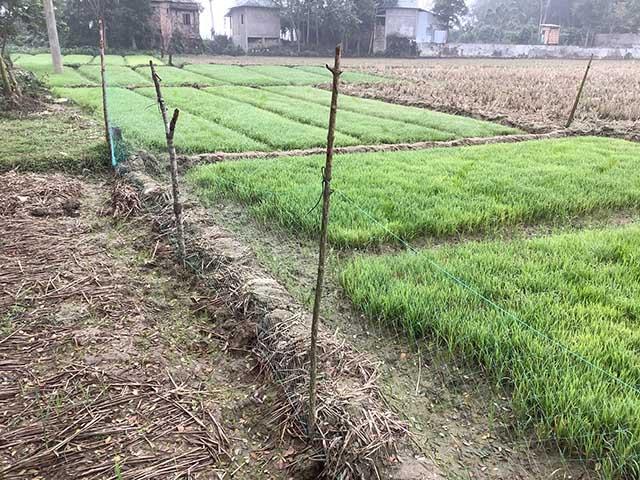Under the Agridome
The View From the Other Side of the World in Asia
As an agricultural economics writer, it always gives my soul some solace when I get to go on a field trip and look up close at what is going on in other parts of the world. During the past three weeks, your loyal scribe has found himself on the other side of the world in Bangladesh, Maldives and Dubai. It is there on the other side of the world where I get to see first-hand some of the economic indicators which will help define where our world is going.
The last time I was in Asia was just before the pandemic four years ago. At the time, I watched on Bangladeshi television as parts of China was going into lockdown over COVID-19. Of course, we all know what happened next as we spent the following three years dealing with the pandemic which completely changed our economic outlook. Four years later, on my return to Asia, it's almost like it never happened. The other part of the world is bursting at the seams with economic growth. It is all so different over there.
In many ways it is a long story. For years now we have heard in this part of the world our agricultural commodities will be consumed by China and other Asian nations where economic growth rates were high. That is essentially what has been happening during the last few years, but lately there's been a bit of a hiccup as demand might soften partly because the Chinese economy is slowing. Or, at least that's what the talking heads are saying from this side of the world. Often I think on this side of the world we fall into the trap of interpreting the other side of the world through our own eyes instead of theirs.
That's one reason I actually like to go put my own boots on the ground in Asia to get a tangible feel for what is happening. My ground zero in Asia was Bangladesh, which is growing consistently at a very high economic growth rate of 8%. If you took the corruption out of the equation, you could even boost that up to 13%. Over the 31 years that I've been traveling there, the economic transformation has been incredible. Poverty alleviation has made great gains -- you can feel it and see it on the streets.
P[L1] D[0x0] M[300x250] OOP[F] ADUNIT[] T[]
Bangladesh is a unique country because it has economic advantages just because of its geography. Not only is it surrounded on all sides by India, the world's largest nation, but also China is a stone throw over the mountains. Bangladesh has great trading relationships with both. With their large dependence on textiles, their best interest is to have a good relationship with the United States. Juggling those three big trading partners who have different geopolitical goals must certainly be a challenge.
Simply put, on the other side of the world some of the things we take for granted here, there not so much. For instance, on this side of the world western governments have made big contributions to the war effort in Ukraine. In fact, there has been somewhat of a united Western Front against Russia for its action in Ukraine. However, on the other side of the world, India and China have increased their purchases of Russian oil and the sanctions are generally not accepted on Russia. Meanwhile, at the many tourist stops on the other side of the world like Maldives and Dubai, you hear Russian voices everywhere. The geopolitical reality in that part of the world is so different than here.
At the same time, we do share some of the same problems. For instance, we all know that world shipping costs have risen recently because of the restriction in the Red Sea caused by the military action of the Houthi rebels in Yemen. I met with textile makers who complained to me that their orders going into Europe were being restricted now simply because of that military problem. Surely grain has been diverted as well. You would think the Houthis would have no friends.
I tried to make friends by walking out into Bangladeshi rice fields. I always like reaching down and grasping the soil to see how it is different than mine. However, it is so far away, it's hard to draw fair comparisons. I'm sure the Bangladeshi farmers who saw me thought of me as a big curiosity versus being their farmer brethren from Canada.
At the end of the day, I came away as I always have. Asia is simply bursting at the seams. Airport terminals are bursting through their capacities and populations continue to grow. Even though we're going through a very bearish time in our agricultural commodity markets at the moment, Asian demand still represents a greater potential trump card in the future. Seeing it up close, only makes me believe it more.
**
The views expressed are those of the individual author and not necessarily those of DTN, its management or employees.
Philip Shaw can be reached at philip@philipshaw.ca
Follow him on X, formerly known as Twitter, @Agridome
(c) Copyright 2024 DTN, LLC. All rights reserved.




